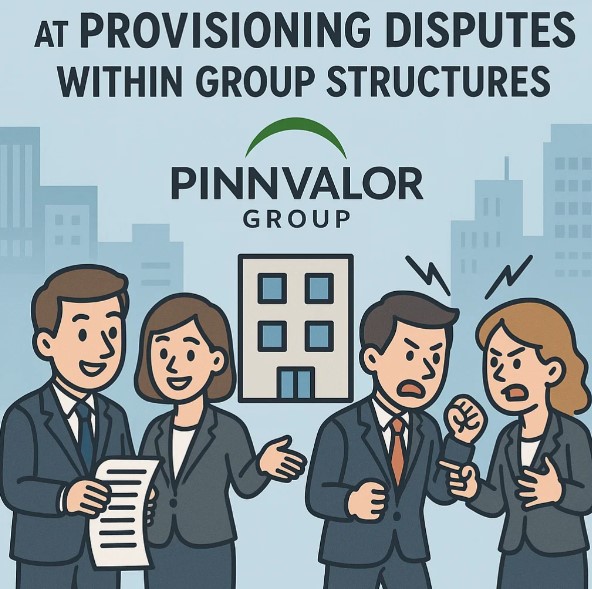
A Pragmatic Look at Provisioning Disputes Within Group Structures
In the complex world of corporate accounting, group structures often present intricate financial challenges—one of the most significant being provisioning disputes. Whether it’s the recognition, measurement, or presentation of provisions, these disputes can trigger compliance risks, tax exposures, and stakeholder tensions. In this blog, we take a pragmatic look at how these disputes arise, their real-world implications, and how entities can manage them effectively.
When provisions cross borders within a group, who takes the hit—and why?
Provisioning disputes aren't just accounting errors—they're reflections of deeper intercompany tensions. Resolving them means aligning risk, responsibility, and regulation."
🔍 Understanding Provisions in Group Contexts
In accounting terms, a provision is a liability of uncertain timing or amount. As per IAS 37 / Ind AS 37, provisions are recognized when:
- An entity has a present obligation (legal or constructive);
- It is probable that an outflow of resources will be required; and
- The amount can be reliably estimated.
In a group structure, multiple entities may be jointly or severally responsible for such obligations. This opens the door for intra-group provisioning disputes, especially when obligations cross legal boundaries or depend on subjective management judgments.
⚠️ Common Scenarios Leading to Disputes
- Shared Legal Cases or Litigation: A parent and subsidiary are both named in a lawsuit. Who books the provision? How is the risk allocated?
- Intercompany Guarantees: A parent guarantees a subsidiary’s loan. Should the parent provision for the guarantee? What if the subsidiary disagrees with the risk assessment?
- Environmental or Compliance Liabilities: A group entity operates in a jurisdiction with stricter environmental laws. The parent might seek provisioning across the group, while local management may resist.
- Restructuring Plans: When restructuring costs are shared among group entities, determining which entity should recognize what portion can cause internal debate.

🧩 Key Challenges in Practice
1. Inconsistent Risk Assessment
Each entity might evaluate risk based on its local management's outlook and legal advice, leading to inconsistent provisioning.
2. Transfer Pricing & Tax Implications
Provisions affect profits and hence the tax base. Differing recognition of provisions across jurisdictions can trigger transfer pricing disputes.
3. Consolidation vs Standalone View
What makes sense at the consolidated level (e.g., spreading a provision across group companies) might not align with standalone reporting obligations of each entity.
4. Auditor and Regulator Scrutiny
Divergent provisioning practices raise red flags for auditors and regulators, especially when material amounts are involved.
✅ Best Practices for Managing Provisioning Disputes
- Establish a Group-Wide Provisioning Policy: Ensure clarity on how provisions are recognized and measured across entities. This policy should align with the group’s risk appetite and regulatory obligations.
- Enhance Inter-Entity Communication: Encourage early dialogue among accounting, legal, and operational teams of all involved entities to pre-empt disputes.
- Use Independent Legal Opinions Where Needed: When disagreements persist, obtaining third-party legal input can bring objectivity to the assessment.
- Create Joint Assessment Committees: A cross-entity provisioning committee can resolve issues while maintaining transparency and uniformity in application.
- Document Everything: Clear documentation of assumptions, risks, judgments, and rationale is vital for both internal alignment and external audit defense.
🧭 Conclusion: Turning a Challenge into an Opportunity
Provisioning disputes in group structures are not just technical accounting issues—they are strategic risk management decisions. With proper planning, strong governance, and collaborative engagement, these disputes can be transformed into opportunities for strengthening internal controls, improving transparency, and reinforcing investor trust.
